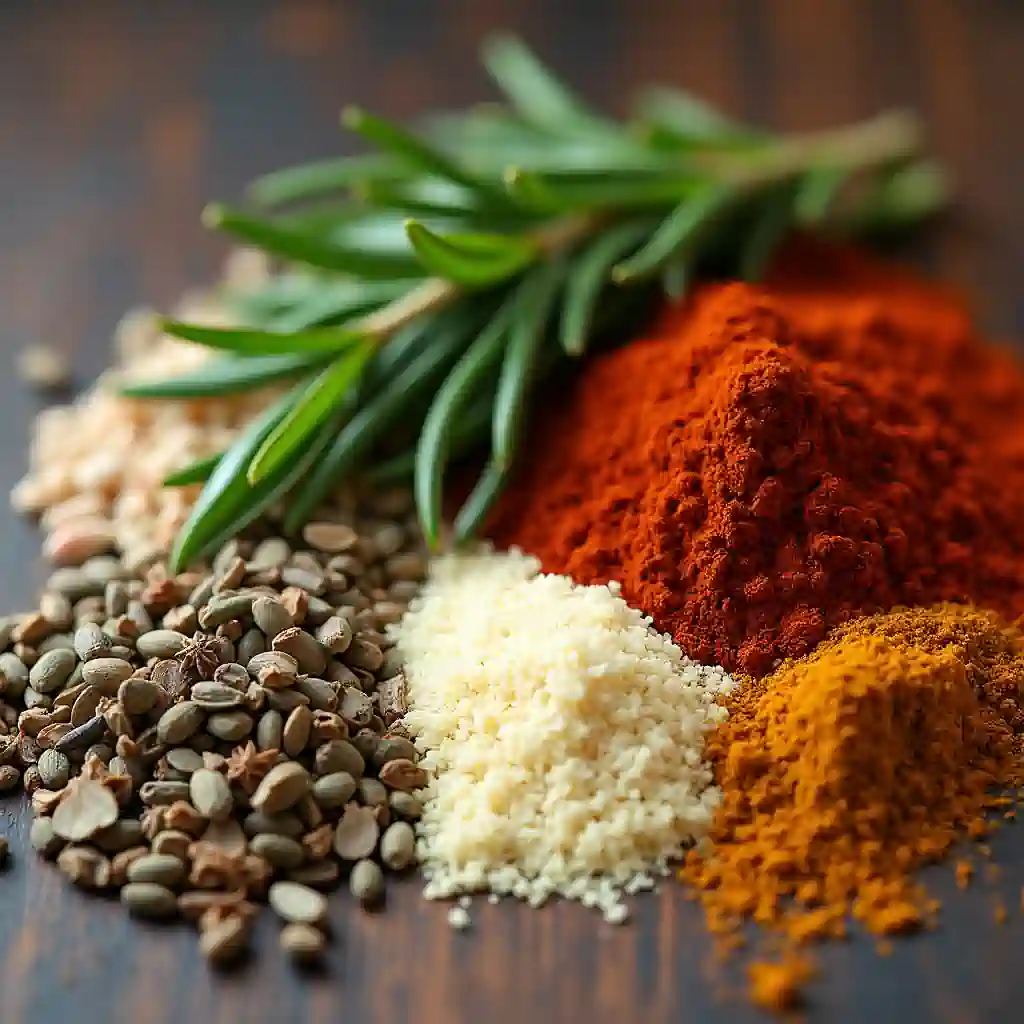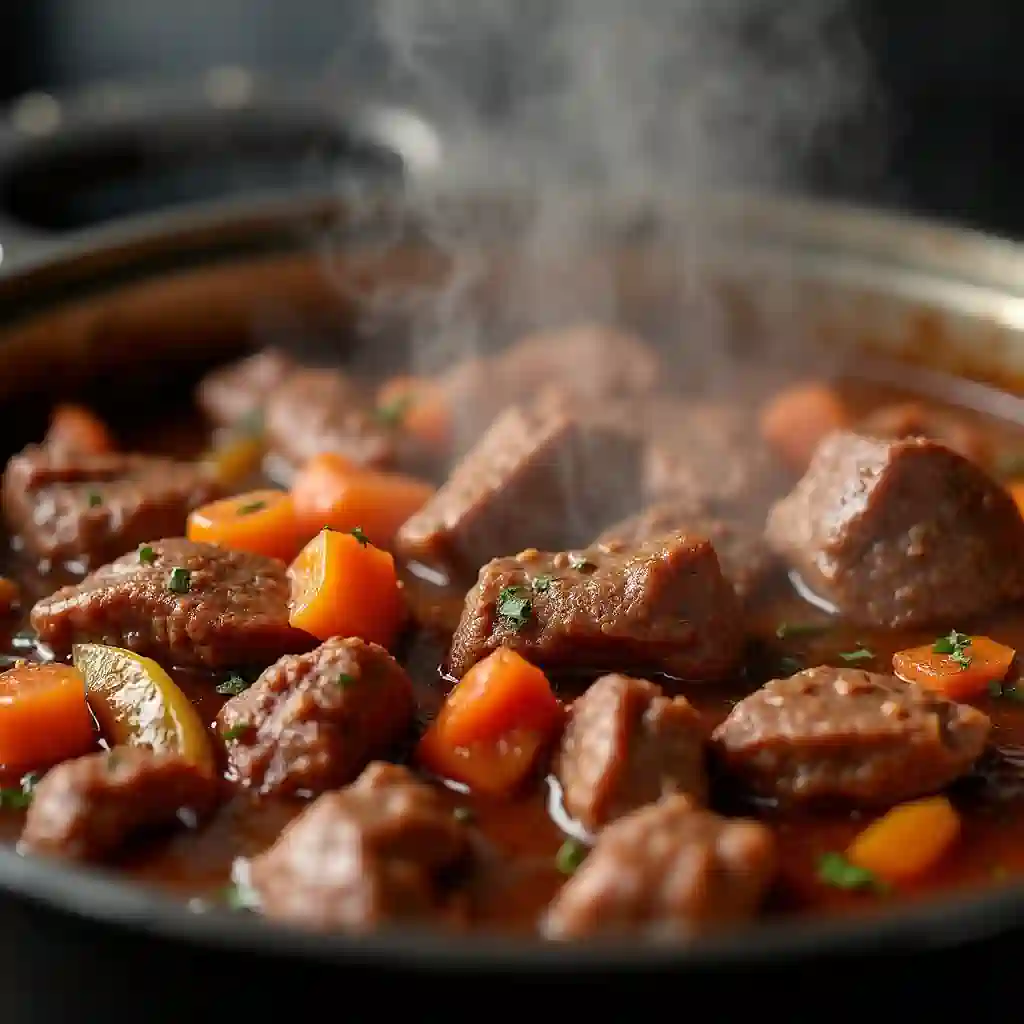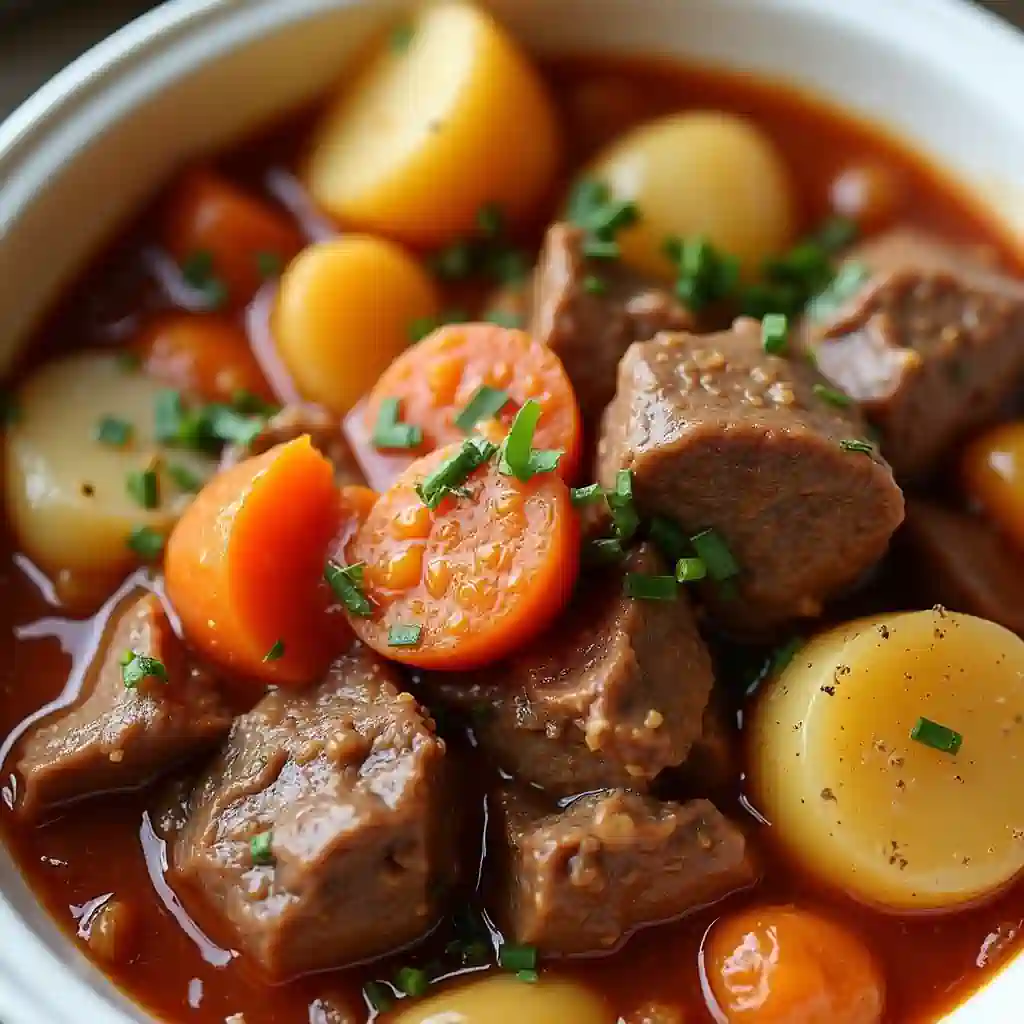A beef stew seasoning recipe is one of the easiest ways to elevate your stew and make it full of rich, mouthwatering flavors. Whether you’re a seasoned cook or just getting started, knowing how to season your beef stew properly can make all the difference. With the right blend of spices and herbs, you can turn a simple pot of beef and vegetables into a hearty, comforting meal. In this guide, we’ll walk you through some essential tips for creating a homemade beef stew seasoning recipe, including the perfect balance of seasonings and how to use them for the best results.
Table of Contents
Introduction to Beef Stew and Its Importance of Seasoning
Why Seasoning is Key to a Delicious Beef Stew
Beef stew is a dish that brings warmth and comfort to the table. It’s one of those meals that’s perfect for a chilly evening, filling up your home with inviting aromas. The combination of tender beef, hearty vegetables, and flavorful broth makes it a satisfying dish loved by many.
But let’s be honest: it’s the seasoning that really makes a difference. Without the right seasonings, beef stew can feel bland and one-dimensional. But with the right beef stew seasoning recipe, it transforms into a rich, flavorful masterpiece. Seasoning is the secret that brings all the ingredients together, highlighting the natural flavors and adding layers of depth.
How Proper Seasoning Elevates Beef Stew
The key to a great beef stew lies in the right balance of seasoning. The seasoning should enhance the flavors of the beef and vegetables, not overpower them. A good beef stew seasoning recipe includes a mix of herbs, spices, and seasonings that work together to create a harmonious, savory profile.
By carefully choosing the right seasonings, you can highlight the beef’s natural richness, the earthiness of the vegetables, and the savory notes of the broth. Properly seasoned beef stew doesn’t just taste good—it feels good, offering a warmth that makes every bite satisfying. Whether you’re cooking for your family or hosting a dinner party, a well-seasoned beef stew can be the dish that steals the show.
Key Ingredients to Make Your Beef Stew Flavorful

Spices That Bring Out the Best in Beef Stew
The foundation of any great beef stew seasoning recipe starts with the basics. These ingredients work together to create a rich, savory base that complements the beef and vegetables. Here are the essentials you need for a solid stew seasoning:
- Salt: It’s essential for bringing out the flavors in the beef and vegetables. Just be careful not to overdo it, as too much salt can overwhelm the dish.
- Pepper: Freshly ground black pepper adds a mild heat and sharpness to the stew, balancing the richness of the beef.
- Garlic: Whether fresh, minced, or in powder form, garlic is a must in any beef stew seasoning recipe. It adds depth and complexity, giving the stew that savory aroma.
- Onion: Onions add both sweetness and savoriness, helping to round out the overall flavor. They pair beautifully with garlic and provide a solid base for your stew.
By incorporating these basic ingredients, you’re creating a flavorful backdrop for the more complex seasonings and herbs that will elevate the dish.
Why Fresh Herbs Are Important for Beef Stew
Once you have the basics, it’s time to take your beef stew seasoning recipe to the next level with the addition of herbs and spices. Here are a few key ingredients that can make a huge difference:
- Thyme: A classic herb in beef stew recipes, thyme imparts a subtle, earthy flavor that pairs perfectly with beef.
- Rosemary: This herb offers a fragrant, pine-like aroma that adds depth to your stew. It’s bold, so use it sparingly.
- Bay Leaves: Bay leaves contribute a subtle, savory flavor that enhances the richness of the stew’s broth. Just remember to remove them before serving!
- Paprika: For a touch of sweetness and mild heat, paprika works wonders in beef stew. It also adds a beautiful color to the broth.
- Parsley: Fresh parsley, when sprinkled on top at the end of cooking, adds a burst of color and a mild freshness to balance out the richness.
By combining these seasonings, you’ll develop a beef stew seasoning recipe that is both flavorful and well-balanced, setting the stage for an unforgettable dish.
Perfecting Beef Stew with Flavorful Seasoning
Making your own beef stew seasoning recipe from scratch is easier than you might think! Here’s a simple, step-by-step guide to creating a flavorful, custom blend for your stew:
- Gather Your Ingredients: Start with your basic seasonings (salt, pepper, garlic, and onion) and your herbs and spices (thyme, rosemary, bay leaves, paprika, parsley).
- Measure the Ingredients: Use the following ratio for a 2-3 lb stew:
- 1 tablespoon salt
- 1 teaspoon freshly ground black pepper
- 2 cloves of garlic, minced or 1 teaspoon garlic powder
- 1 medium onion, chopped or 1 teaspoon onion powder
- 1 teaspoon thyme
- 1 teaspoon rosemary
- 2 bay leaves
- 1 teaspoon paprika
- 1 tablespoon fresh parsley (optional, for garnish)
- Mix the Ingredients: Combine the seasonings and herbs in a bowl. If you’re using dry herbs, you can also use a spice grinder to blend them together. Mixing them ahead of time ensures they distribute evenly throughout the stew.
- Add to Your Stew: Stir the seasoning blend into your beef stew base after browning the meat, allowing the spices to cook and release their flavors. Let the stew simmer for a couple of hours to ensure the flavors meld together beautifully.
This simple process results in a beef stew seasoning recipe that’s full of depth and flavor. You can also experiment by adjusting the ratios to match your personal tastes.
Adjusting Seasoning to Create the Perfect Recipe
One of the best things about making your own beef stew seasoning recipe is the ability to adjust it according to your preferences. Here are some tips for perfecting your seasoning blend:
- Add More Heat: If you like your stew with a bit of spice, try adding a pinch of cayenne pepper or red pepper flakes to the mix.
- Boost the Herb Flavor: Add extra rosemary or thyme if you prefer a more herbal flavor. These herbs are bold, so a little goes a long way.
- Balance the Salt: If you’re watching your sodium intake, try reducing the salt and replacing it with a salt-free seasoning blend or a low-sodium option.
- Try Additional Spices: For an extra depth of flavor, experiment with spices like cumin, smoked paprika, or even a touch of cinnamon.
By tweaking the seasoning, you can create a personalized beef stew seasoning recipe that matches your ideal flavor profile.
Popular Beef Stew Preparing Variations
Classic Beef Stew with Garlic and Thyme
A timeless beef stew seasoning recipe often includes garlic and thyme. Garlic adds depth with its savory flavor, while thyme brings an earthy, aromatic touch. Together, they create a flavor base that enhances the beef without overpowering it.
Combine minced garlic with dried thyme, salt, and pepper to create this classic seasoning. Add the seasoning while browning the beef to help it infuse the meat with rich flavor. As the stew simmers, the garlic and thyme work their magic, creating a comforting, savory dish.
Mastering the Art of Seasoning Beef Stew
For those who enjoy a bit of heat, try adding chili powder or cayenne pepper to your beef stew seasoning recipe. These spices introduce a bold, fiery flavor that contrasts nicely with the rich beef.
Use cayenne pepper or chili powder in moderation—start with a pinch and adjust to taste. To balance the heat, consider adding smoked paprika, which adds depth and a subtle smokiness. This variation makes for an exciting beef stew that packs a flavorful punch.
Top Flavor Combinations for Beef Stew
Combining Salt, Pepper, and Herbs for Depth of Flavor
When it comes to beef stew seasoning recipes, the key to unlocking depth of flavor is a well-balanced blend of salt, pepper, and herbs. These three ingredients are the foundation of great seasoning and provide a balanced backdrop for the richness of the beef.
Salt is essential for bringing out the natural flavors in your stew. It helps enhance the savory quality of the beef and vegetables, making the stew more flavorful overall. Pepper, freshly ground, adds a bit of sharpness and warmth, which contrasts beautifully with the richness of the beef. Finally, adding herbs like thyme, rosemary, and bay leaves brings an aromatic, earthy quality that ties all the flavors together.
By adjusting the amount of salt and pepper, you can control the seasoning level, ensuring that your beef stew has just the right amount of savory balance without becoming too salty or bland.
Balancing Sweet and Savory Flavors in Stew
To add a touch of complexity to your beef stew seasoning recipe, try incorporating sweet and savory flavors. This combination can make your stew more dynamic and intriguing. Consider adding a bit of brown sugar, honey, or a touch of cinnamon to bring a subtle sweetness that contrasts with the savory beef.
For example, you can mix brown sugar with garlic and rosemary for a perfect blend of sweet and savory. This combination works especially well when you’re simmering the stew for a longer period, allowing the sweet flavors to fully integrate into the dish. You can also add a splash of balsamic vinegar or soy sauce to enhance the savory depth, giving your beef stew a unique and delicious flavor profile.
These sweet and savory ingredients add balance, offering an unexpected but delightful twist. The sweetness complements the rich beef, making every bite more satisfying and flavorful.
Perfect Ways to Add Seasoning to Beef Stew
When to Add the Seasoning for Maximum Flavor
For the best flavor, add the beef stew seasoning recipe at key points during cooking. Start by seasoning the meat as you brown it. This helps the spices stick and enhances the beef’s flavor. Once the beef is browned, add your broth or liquid, followed by the remaining seasoning.
To avoid overpowering the stew, add seasoning gradually and taste as you go. Allow the stew to simmer so the flavors can meld together, adjusting seasoning as needed towards the end of cooking.
Seasoning the Beef and Vegetables for Even Distribution
For even seasoning, coat both the beef and vegetables. Stir the beef and vegetables together so the seasoning is distributed throughout. Some vegetables absorb more flavor than others, so check the seasoning again after adding them. Adjust with extra salt, pepper, or herbs if necessary to ensure every bite is well-seasoned.
Frequently Asked Questions (FAQs)
What Can I Add to Beef Stew for Flavor?
To enhance your beef stew, try adding Worcestershire sauce for umami, a splash of balsamic vinegar for acidity, or fresh herbs like rosemary or thyme. These ingredients work well with your beef stew seasoning recipe and make the stew even more flavorful.
What Is the One Ingredient Upgrade for Better Beef Stew?
Fresh garlic is a game-changer for your stew. It offers a richness that garlic powder can’t match, infusing the broth with savory goodness and complementing the beef stew seasoning recipe perfectly.
How Do I Make Beef Stew Meat More Tasty?
To add flavor to the beef, marinate it with garlic, herbs, and a bit of oil before cooking. Browning the meat also adds a lot of flavor, so don’t skip this step. This method gives the beef a rich, caramelized flavor, making it tastier in your stew.
How Do You Make Stew More Tasty?

To make your stew tastier, balance the seasoning carefully. Add salt, taste often, and adjust. Simmer the stew for a longer period to allow the flavors to deepen and develop.
How to Store and Use Leftover Beef Stew Seasoning
Storing Beef Stew Seasoning for Future Use
Store your beef stew seasoning recipe in an airtight container, like a jar or plastic bag, in a cool, dry place. This will keep the spices fresh for up to three months. Label the container with the date of preparation to keep track of freshness.
If you make a large batch, divide it into smaller portions to add directly to your stews. This method ensures quick access to your seasoning mix whenever you need it.
How to Reuse Beef Stew Seasoning
Reusing your seasoning mix is simple! You can use it in other stews, soups, or even as a marinade for beef. Adjust the seasoning to your preference by adding more salt, herbs, or spices as needed. Reusing this mix will save you time and help streamline meal prep while adding rich flavor to your dishes.
Conclusion: Perfecting Your Beef Stew
The Secret to a Flavorful Beef Stew
The beef stew seasoning recipe is a balance of basic and bold ingredients. While salt, pepper, garlic, and thyme form the base, herbs like rosemary and spices like paprika add unique flavors. You can adjust the seasoning mix to suit your preferences, ensuring each stew is flavorful and satisfying.
Why Experiment with Your Own Seasoning Mix?
Homemade seasoning mixes are a great way to enhance your stew’s flavor while having full control over the ingredients. Store-bought packets can be convenient, but nothing beats the richness of freshly blended herbs and spices. With a customized beef stew seasoning recipe, you can bring out the best in your beef stew, making each bite a comforting experience.
Related Articles
- What Not To Put In Meatloaf? Skip Those Ingredients Right Now
- What Is The Basic Meatloaf Formula? Simple Ingredients, Perfect Results
- What Does Adding An Extra Egg To Meatloaf Do? A Simple Recipe Hack
- What Temperature Do You Smoke a Meatloaf At? A Comprehensive Guide
- Smoked Meatloaf Recipe: How To Make The Best Smoked Meatloaf Ever
- Vegan Venison Chili: Delicious and Nutritious Plant-Based Recipes

